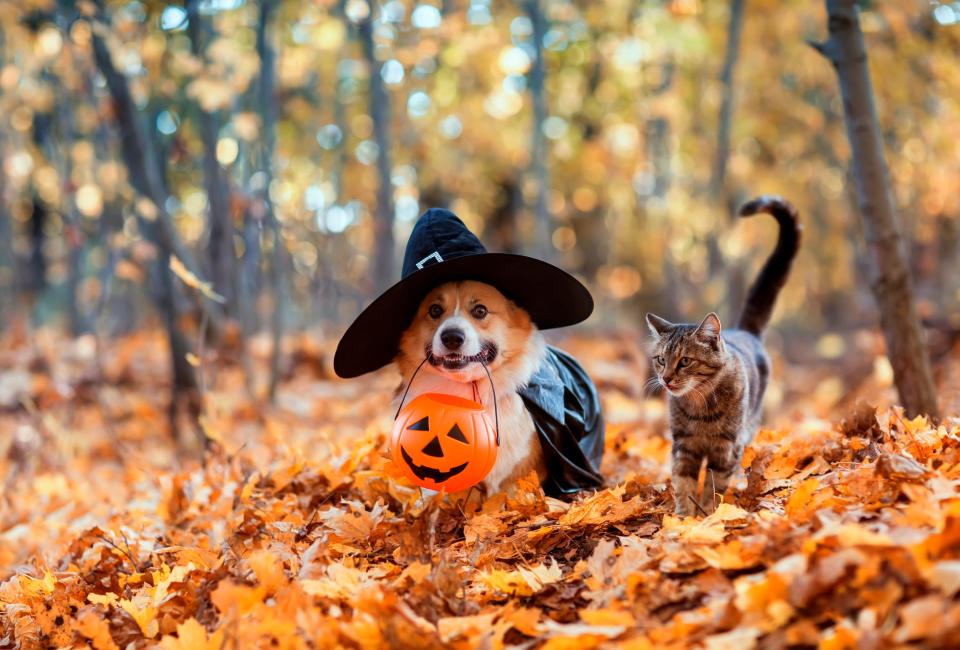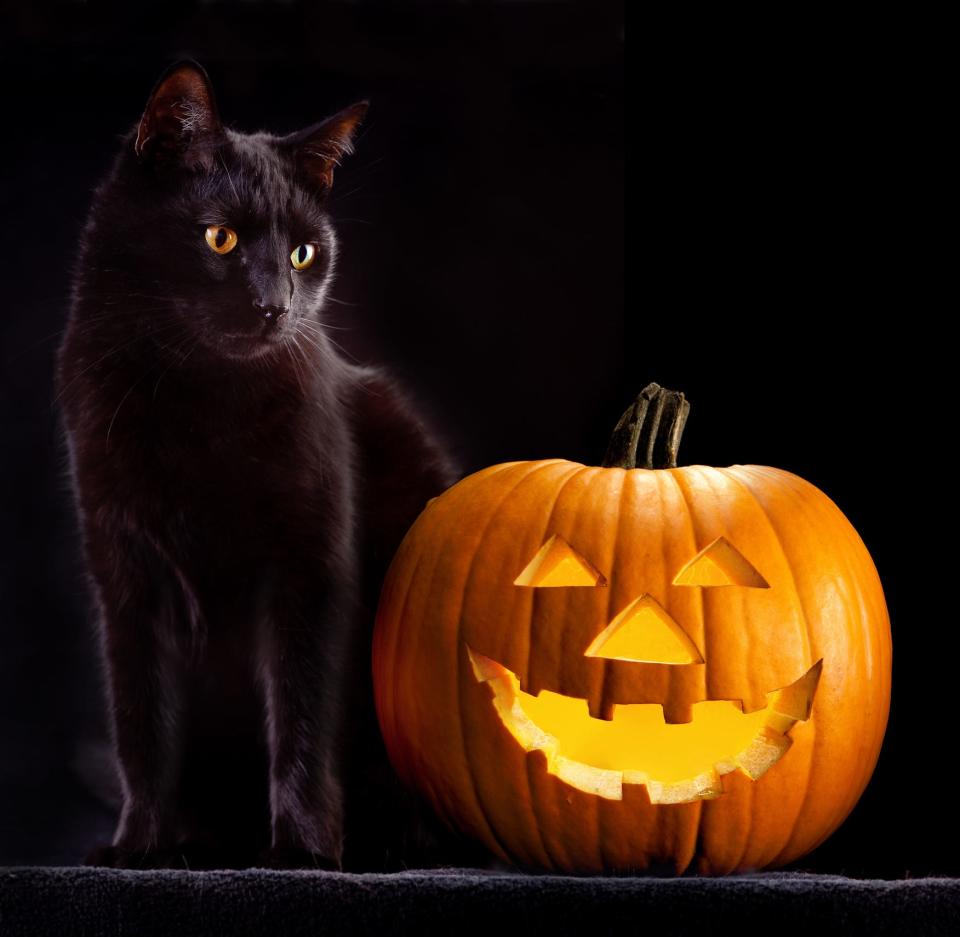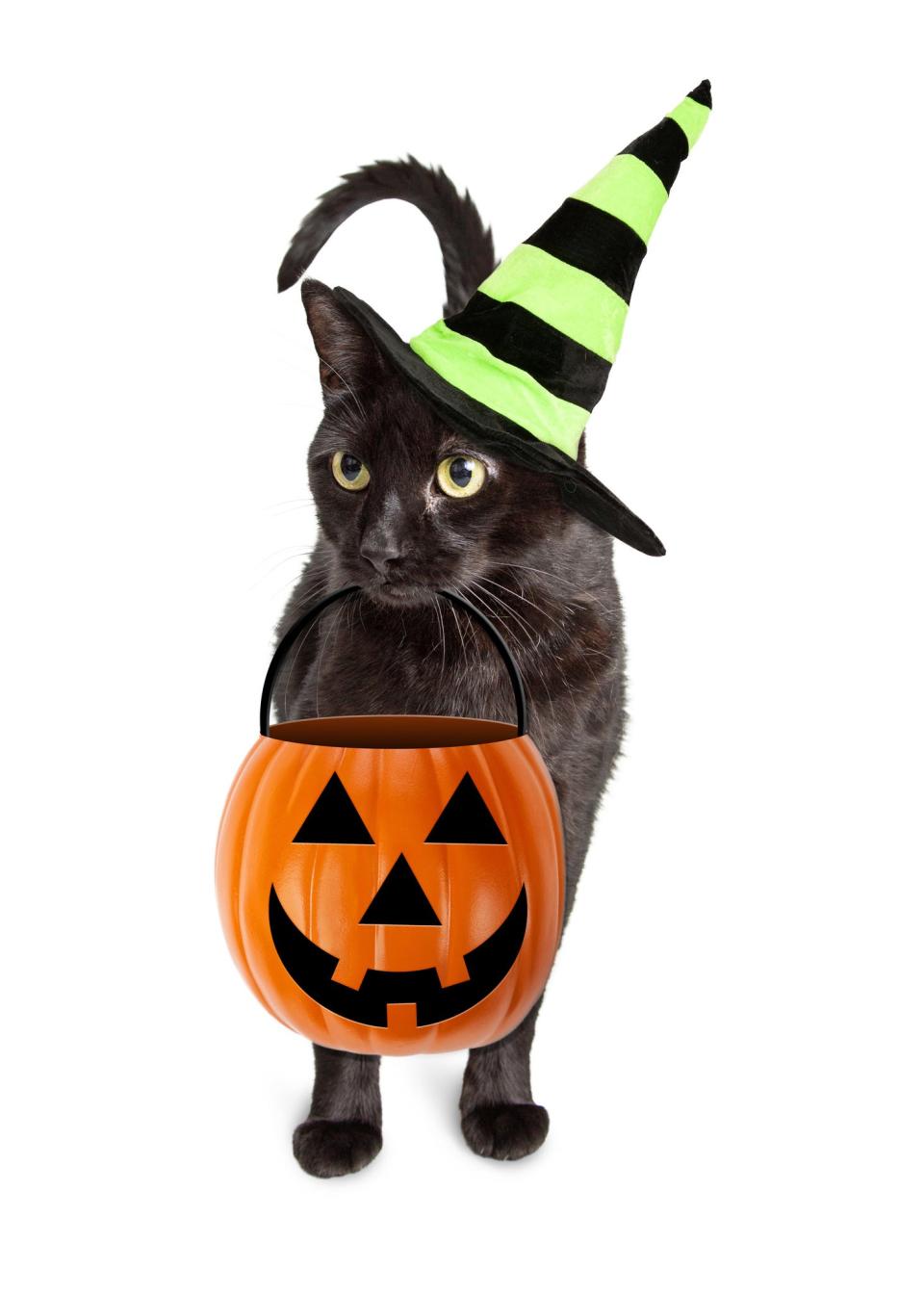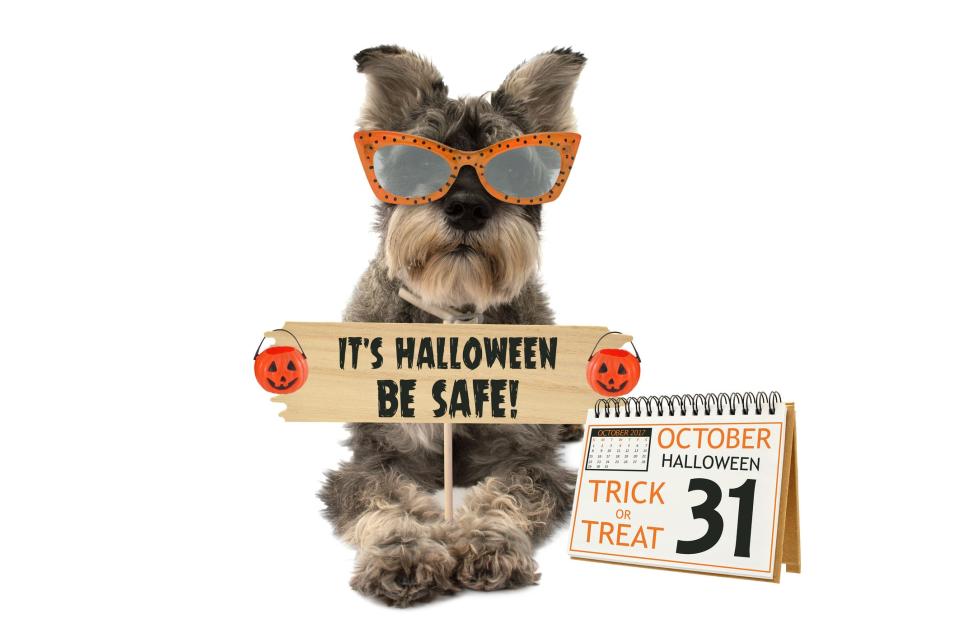Halloween pet safety: Tips to keep your furry friends safe this trick-or-treat season
Part of the fun of Halloween is a good scare. People love to celebrate with grotesque costumes, visit spooky haunted houses or enjoy an old-fashioned horror movie night.
We are able to enjoy this "scary fun" because we know that even if it unsettles us a bit, it doesn't come with any real risk of harm or danger. Our pets, however, don't have the privilege of understanding this.
Unfamiliar and scary-looking costumes, loud noises and hubbub, strangers appearing at their home and the ever-present threats of poisoning from treats or getting lost in the commotion are just a few anxiety-inducing components of the holiday our furry friends contend with.
To make things more frightening, many people still hold the belief that certain animals, specifically black cats, are in more danger Halloween night, as some have historically believed their association with bad luck and superstition makes them a target for harassment and even violence.
While this specific tip of wisdom may prove outdated, there is plenty of new information for keeping not only your cats but other pets safe during Halloween. Read the tips below for what to look out for while enjoying the holiday.
The American Halloween budget has grown: Costumes, candy, decor fuel $12.2 billion Halloween spending splurge in US: A new record

How to protect cats on Halloween

Luckily, it turns out there’s no evidence to support the once commonly held belief that people go out looking for black cats to torture or sacrifice on Halloween, Emily Tolliver, Director of Communications and Design at Shelter Animals Count, told USA TODAY.
As previously reported by USA TODAY, black cats being associated with Halloween and bad luck goes as far back as ancient Egypt and Greece when they were seen as mythical creatures. In medieval Europe, the rise of witchcraft was associated with black cats, and they were also heavily blamed for spreading the Black Plague. Despite being associated with bad luck, black fur is a dominant trait in cats.
This means you're pretty likely to cross a black cat or two in your daily life.
"While the specific dangers to black cats around Halloween may have been relegated to urban myth status, there are real reasons to take extra precautions to keep cats of all colors safe during the week of All Hallow’s Eve", says Tolliver.
According to Tolliver, even without the truly diabolical dangers, cats and other pets may still face some unique challenges on Halloween night. While any potential pranks and tricks would more than likely involve toilet paper or smashed pumpkins, and not target pets, it’s best to keep cats and dogs indoors, especially during trick-or-treat time.
Even outside of Halloween time, many veterinarian and animal welfare groups advise against allowing cats outside indiscriminatingly and unsurprised, as they pose a risk not only to themselves but the environment at large. Free-range domestic cats are destructive invasive species that can majorly disturb local ecosystems and kill native plants and animals.
Research has also shown that outdoor cats have half or less the lifespan of indoor cats, as they are exposed to dangers ranging from cars and predators to inclement weather and undesirable human interactions. Researchers at University of California-Davis found that indoor cats may live 15 to17 years and even more, while the life expectancy for outdoor cats is only 2 to 5 years.

Seasonal dangers to pets: Love everything fall? These seasonal items in your home could be dangerous for your pets
How to keep all pets safe on Halloween

Keep IDs updated: Ensure they’re wearing a collar and current ID tag, and that their microchip info is current with the shelter or veterinarian who implanted their chip.
Secure a quiet space: Keep pets in quiet room with their favorite bed or blanket so they don’t get spooked by the noisy visitors and dart when you're opening your door for trick-or-treaters. You can also set candy outside to avoid ringing doorbells and opening doors altogether.
Supervise outdoor time: If your pet is going to be outside, it should be in a gated or otherwise enclosed yard or accompanied on a leash. Roaming packs of kids in costumes may not pose a direct safety threat on Halloween, but they may inadvertently, or intentionally, tease or terrorize wandering pets.
Be aware of outdoor dangers: While being dark-colored and low to the ground may put cats at year-round risk of injuries (or worse) from cars, drivers on Halloween may be extra-focused on watching for children and may not notice cats crossing the street. If you expect your animal to be outside at any time, it's a good idea to invest in a reflective breakaway collar, vest, harness or other means of increasing visibility.
Keep candy safely stashed: Chocolate and cocoa contain theobromine and caffeine, both of which are dangerous for dogs and cats and many candies are sweetened with Xylitol, an artificial sweetener that can lead to hypoglycemia, resulting in seizures and liver failure.
Dangerous decor: Candles and lit jack-o'-lanterns are obvious fire hazards, but other dangerous decorations include anything from fake blood, which can be poisonous, string lights or cobwebs that can be a chocking or strangling hazard, to small components of costumes that can be consumed.
Stay costume conscious: Many animal professionals advise against dressing your pet up, as it can easily cause stress, anxiety and fear. If you dress your pet up (or dress up around your pet!) it is vital to ensure the costume fits correctly, doesn't cover their mouth, nose or ears and does not have components that could be a strangling hazard, nor loose parts that can be chewed or swallowed. Always supervise pets while they are wearing any kind of costume.
Other seasonal risks for pets
While Halloween and Thanksgiving are the stars of the autumn show, there are hidden seasonal dangers that can pose a risk to pets through the entirety of fall.
Foods we may think safe to share like our roasted turkey, certain festive scents and event plants we bring inside can harbor lesser-known risks for pets.
Mums, also known as Chrysanthemum, for example, are popular in autumn but contain sesquiterpene, lactones and pyrethrins, which are toxic to cats, dogs and horses and can cause symptoms such as vomiting, diarrhea, hypersalivation, incoordination and dermatitis.
That hit of pumpkin spice scent you get from an essential oil diffuser can likewise be cause for concern, as accidental consumption or absorption through a pet's skin can cause digestive issues, neurologic problems, stomach ulcers, kidney and liver damage and even organ failure and death.
Check out our list of more popular seasonal items that could be dangerous for your pets.
Need a Halloween costume idea? Here are the most popular Halloween costumes of 2023, according to Google
This article originally appeared on USA TODAY: Protecting pets this Halloween: tips every pet owner should know

